I made this recipe as written (no seeds): ingredients and method and all went well. It was good but I didn’t like the taste enough to make again, although I might try some additions like coconut, fruit and nuts or seeds.
I make roast, cooked groats fairly often and use them like rice or quinoa as well as in a breakfast porridge. At the beginning of making them, I had very mixed results and a lot of mushy-glutinous results until I bought Russian groats (toasted) from Amazon. Those work wonderfully, but since they are toasted, I am unsure if they would work with this recipe so based on comments, I bought Breadtopia raw groats. But to summarize my prior experience, bin groats, Bob’s Red Mill … none resulted in nice fluffy buckwheat when cooked … only the Russian brand.
Shortly before I tried this recipe, I happened across an article (which of course, I now can’t find!!) that stated the difference in processing in the U.S. vs Russia (and Eastern Europe) results in the difference in how the groats cook. I thought “Ah-hah!”
And then I also paid more attention to recipes that called for roasted vs raw groats.
SO - as far as this recipe, at the minimum I believe raw groats and my order of Breadtopia groats worked well plus they looked and smelled good.
I did do a test this morning with the Breadtopia raw groats: toast 1/2 cup in a hot skillet until brown and fragrant (2-4 min.), add 1 cup water, boil, cover and simmer until fluffy (al dente) … 10-20 minutes. Mine took 16 minutes this morning. They are not as fluffy as the Russian brand I use, but not as mushy-glutinous as Bob’s or bulk bin stuff.
Not exactly scientific, but I believe I have a better idea of what works and kind of why.
The bread about 2 hours out of the oven.
Breadtopia raw buckwheat groats roasted and cooked per above.
Cooked groats in porridge.
NOW … Melissa (@Fermentada) has at least 1 porridge bread recipe here on Breadtopia and I’m thinking about trying that with Buckwheat porridge.
Also, if anyone wants something else to do with buckwheat groats, this waffle recipe is buckwheat groats, steel cut oats and no other flour. You mix most of the ingredients, blend, let sit overnight and make waffles or pancakes in the morning. If your oats and groats are certified gluten free, you have gluten free waffles or pancakes. I don’t eat gluten free but these are great waffles!! Overnight buttermilk buckwheat waffles.
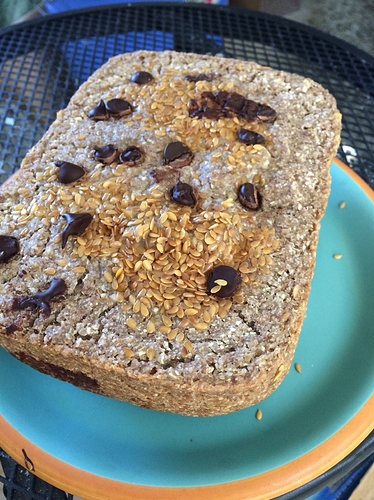
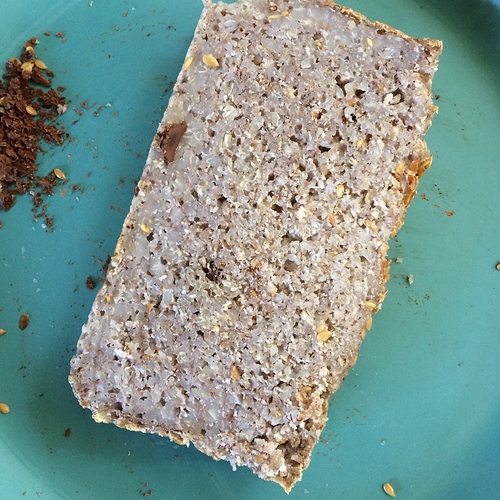

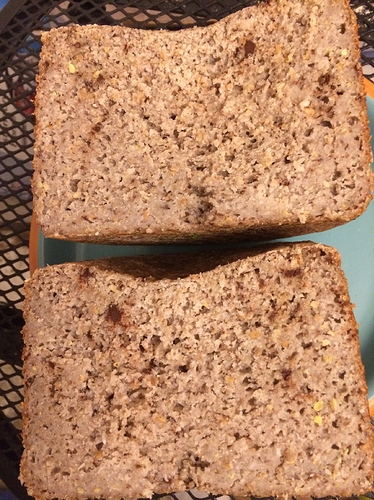
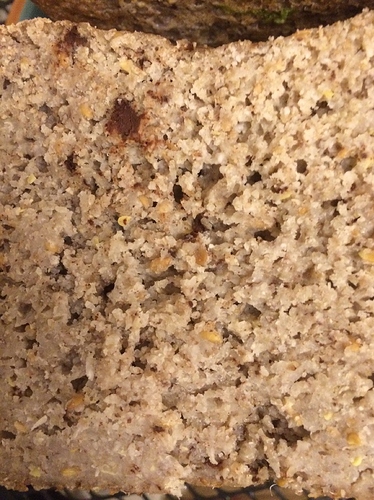


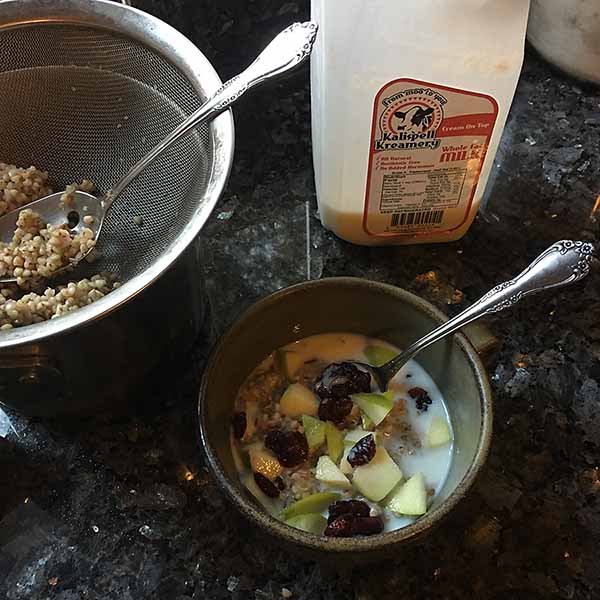
 ️
️